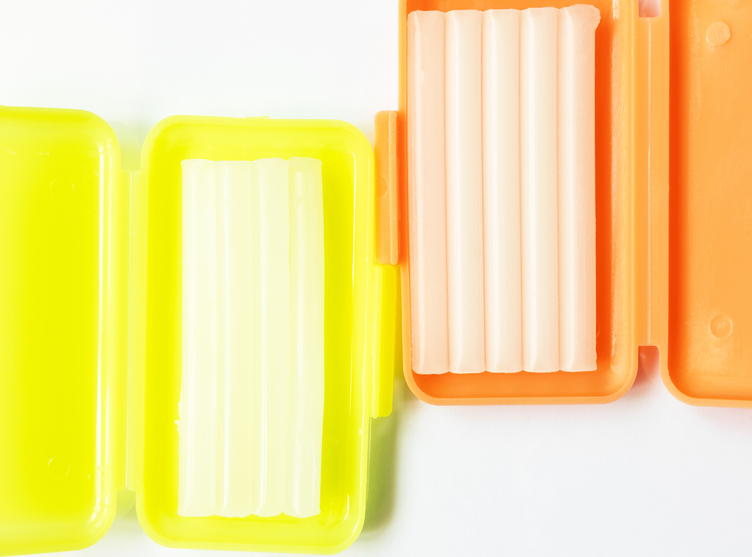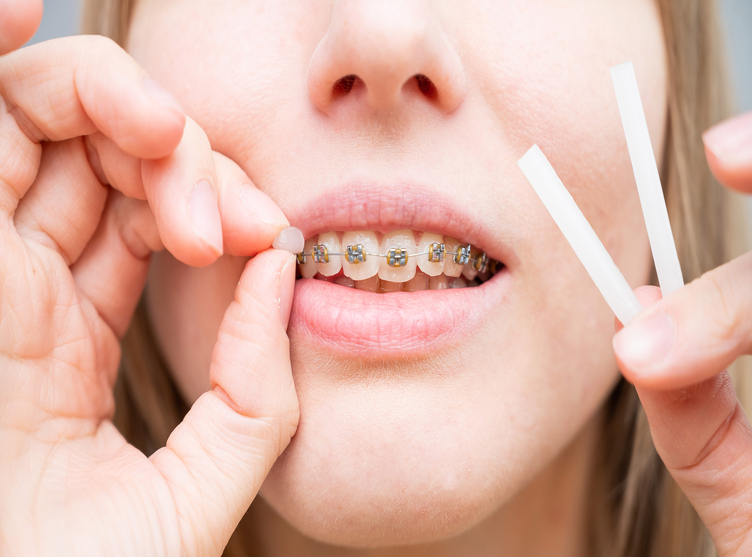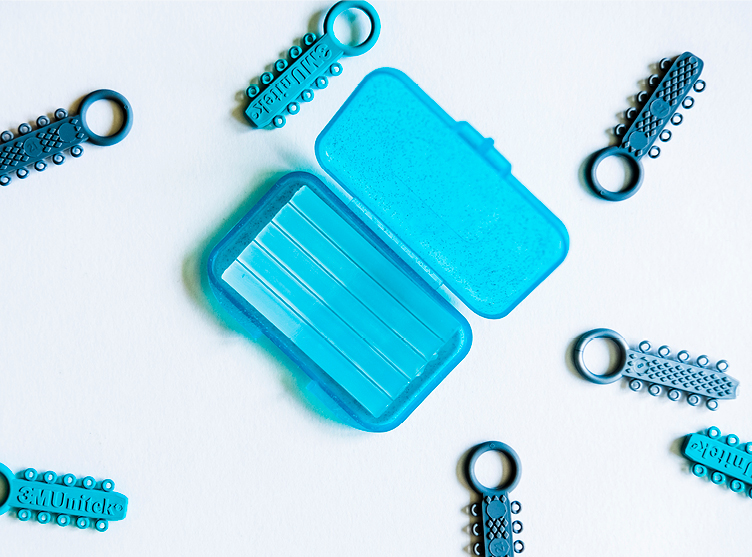
If you’ve recently started orthodontic treatment, you may have noticed that your braces can feel rough against the inside of your cheeks, lips, or tongue. This is completely normal, especially during the first few weeks as your mouth adjusts. One of the most common ways orthodontists help patients manage this discomfort is with braces wax—also known as orthodontic wax or dental wax for braces.
Braces wax creates a smooth, protective barrier over the edges of brackets or wires, reducing irritation and allowing the soft tissues in your mouth to heal. While it’s a simple tool, many patients are unsure how to use it properly, when to apply it, or what alternatives exist. This guide will walk you through everything you need to know—from application steps and safety tips to common mistakes to avoid.
What is Orthodontic Wax?
Orthodontic wax is a soft, pliable material made from safe, non-toxic ingredients such as:
- Beeswax – a natural, traditional option.
- Carnauba wax – plant-based and often used in vegan-friendly versions.
- Silicone-based wax – slightly firmer and longer lasting.
- Paraffin wax – common in many dental wax packs.
These materials are safe if accidentally swallowed, making them suitable for children and adults alike. Orthodontic wax does not treat the root cause of irritation but instead acts as a temporary protective coating until your mouth adapts or your orthodontist makes necessary adjustments.
Most orthodontists provide patients with a starter pack when braces are first fitted, but you can also buy wax for braces at pharmacies, supermarkets, or online. Some versions come in pre-cut strips, while others are supplied in blocks that you can pinch into smaller pieces.
(Pro insight: Many patients find that within 1–2 weeks, their cheeks and lips toughen naturally, reducing the need for wax. Until then, it’s a valuable short-term aid.)
How to Use Wax on Braces

Close-up portrait of a young woman applying orthodontic anti-scratch wax to the braces.
Using braces wax effectively is more than just pressing it onto a bracket. To get the best results, follow these steps:
- Wash your hands thoroughly – This prevents bacteria from entering your mouth.
- Brush and floss gently – Food particles can stop wax from sticking properly.
- Dry the area first – Use a tissue or cotton swab to pat dry the bracket. Wax adheres better to a dry surface.
- Break off a small piece – About the size of a pea is usually enough.
- Roll into a ball – This softens the wax and makes it easier to mould.
- Press onto the bracket or wire – Cover the area causing irritation and smooth it down with your finger.
- Check placement – It should feel smooth against your cheek or lip. If it falls off, re-dry the area and try again.
Common mistakes to avoid:
- Using too much wax at once (it won’t stick properly).
- Trying to apply wax over food debris.
- Leaving wax on for several days without replacing it.
When to Apply Wax on Braces

There’s no strict rule for when to use braces wax—it’s simply applied whenever you feel irritation. However, some situations are especially common:
- First week of braces: Soft tissues are adjusting to the new brackets and wires. Wax can significantly reduce soreness.
- After orthodontic adjustments: Tightened wires may feel sharper and rub against cheeks or lips.
- During sports or physical activities: A protective layer of wax helps minimise cuts if you accidentally bump your mouth.
- For musicians: Those who play wind instruments often use wax to stop the braces from interfering with performance.
- Before special events: Weddings, interviews, or presentations where you want to avoid discomfort.
- In emergencies: If a wire breaks and is poking your cheek, wax can hold it in place until your orthodontist can fix it.
(Tip: Always carry a small box of dental wax in your bag or pocket—many patients find it as essential as lip balm during treatment.)
How Does Braces Wax Help?

Braces wax works by creating a smooth, cushioned barrier between the sharp edges of orthodontic appliances and the delicate lining of your cheeks, lips, or tongue.
Here’s why it’s so effective:
- Reduces friction: Brackets and wires no longer rub directly on soft tissues.
- Prevents sores: Stops cuts and ulcers from developing.
- Aids healing: Gives existing sore spots a chance to recover.
- Improves comfort: Makes speaking, eating, and smiling more manageable.
Most patients only need braces wax in the early stages of treatment. As your mouth adjusts, the soft tissues toughen naturally. That said, many continue to use it after adjustments or when a wire feels particularly sharp.
(Professional insight: Orthodontists often remind patients that wax is not a long-term solution. If pain persists for more than a few days, it may indicate a wire adjustment is needed.)
How to Remove Wax from Braces
Removing wax is as important as applying it correctly. Old wax can trap food and bacteria, which may cause bad breath or plaque buildup if left for too long.
Safe removal tips:
- Use clean fingers – Gently peel off the wax starting from one end.
- Toothbrush method – A soft-bristle brush can help sweep away small fragments.
- Warm water rinse – Swishing with warm water softens leftover wax for easy removal.
- Dental floss – Useful if wax is lodged between teeth or behind a wire.
Key rule: Never use sharp tools, such as toothpicks or pins. These can damage both the braces and your gums.
Replace the wax regularly—at least once or twice daily. Never leave the same piece in your mouth for more than 24–48 hours.
Precautions When Using Dental Wax
While orthodontic wax is safe, a few precautions ensure you get the best results:
- Clean and dry first: Moisture prevents wax from sticking.
- Do not swallow large amounts: It’s non-toxic, but not intended for consumption.
- Don’t reuse old wax: Always discard used pieces.
- Avoid using petroleum jelly as a substitute: It doesn’t stick well and may not be safe for long-term use with braces.
- Don’t apply to open wounds: If a sore spot is bleeding or severely inflamed, see your orthodontist.
If irritation lasts more than a week or you develop repeated ulcers, it’s best to book an appointment. Persistent pain may indicate your braces need adjustment.
Alternatives to Orthodontic Wax
While wax is the most common choice, some alternatives may work better for certain patients:
- Silicone-based orthodontic covers: Longer lasting and less sticky than traditional wax.
- Mouthguards: Particularly useful for sports, providing full protection against bumps.
- Saltwater rinses: A natural way to soothe irritation and promote healing.
- Anaesthetic gels: Short-term relief for painful ulcers (only use under professional advice).
- Clear aligners: For patients eligible for removable aligner treatment, discomfort from brackets and wires is minimised.
(Authority tip: Many orthodontists recommend keeping wax for braces on hand even if you also use alternatives, as it’s the most convenient on-the-spot solution.)
FAQs About Braces Wax
- Can you sleep with wax on your braces?
Yes, and many patients do. Just remember to replace it the next morning. - Can You Eat with Wax on Braces?
Technically, yes, but most orthodontists recommend removing it before meals to prevent damage. Food can cause the wax to break down quickly, and it may need to be reapplied after eating. - How long can you leave wax on braces?
No longer than 24–48 hours. Replace it daily for hygiene. - What if I accidentally swallow it?
Don’t worry—orthodontic wax is non-toxic. Small amounts are safe if swallowed. - Can children use orthodontic wax?
Yes, but parents should supervise to ensure proper application and safe use. - Why won’t my wax stick?
The most common reason is moisture. Make sure the bracket is dry before applying. - Is there a vegan option?
Yes—look for carnauba wax or silicone-based alternatives instead of beeswax.
Conclusion
Braces wax may seem like a simple tool, but it can make a big difference during orthodontic treatment. Whether you’re in the first week of braces, adjusting to new wires, or preparing for a special occasion, it provides quick relief from irritation and protects the soft tissues of your mouth as they adapt.

Remember:
- Always apply wax to clean, dry brackets.
- Replace it regularly to maintain hygiene.
- Treat it as a temporary comfort measure rather than a long-term solution.
If discomfort persists, it’s important to consult with your orthodontist. At Smile Team, you can receive tailored advice and support throughout your orthodontic journey, ensuring you remain comfortable while working towards a healthy, confident smile.